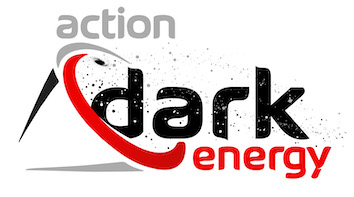I will show how the non-Gaussianity induced by the non-linear growth of structure needs to be accounted for for the next-generation of galaxy surveys. I will present new non-Gaussian covariance terms and their numerical implementation for the galaxy angular power spectrum, showing that it is necessary to go beyond the previous state of the art already for a Euclid baseline cosmological...
The Effective Field Theory of Dark Energy (EFToDE) is a powerful formalism that classifies and unifies theories of modified gravity according to their imprints on the cosmological background and structure formation and links these properties to specific operators in the action. It also contains the famous Horndeski theory as a subset. Despite the fact that the original functional parameter...
L'environement de travail Apache Spark est tres utilise dans
l'industrie pour organiser et analyser les grands volumes de donnees.
Je montrerai que cette "technologie Big Data" peut egalement etre
appliqueee en science sans trop de souffrances, en particulier en
astrophysique ou les volumes de donnees des prochains grands releves
de galaxies augmentent drastiquement.
A partir d'une...
Next generation experiments will provide an unprecedented volume of data to constrain the nature of Dark Energy. LSST is expected to detect 10,000 transient candidates every 30 seconds, within these alerts LSST will discover supernovae that can be used in cosmology analyses. To fully harness the power of LSST, it is imperative to develop innovative methods able to deal with large data volumes...
Cepheids represent a fundamental tool for measuring the distances in the Universe thanks to the Leavitt law (period-luminosity) relation. In order to calibrate this relation accurately, precise distance measurements are required. The Gaia satellite monitors a large number of Galactic Cepheids, and will eventually provide extremely accurate parallaxes to hundreds of them. This will considerably...
Le Kilo Degree Survey (KiDS) est l'un des trois grands relevés contemporains de cisaillement cosmique, avec DES et HSC. Je présenterai les premiers résultats cosmologiques de KiDS publiés en 2016/2017, puis l'évolution de notre compréhension de la tension observée entre ces contraintes cosmologiques et celles obtenues à partir du satellite Planck. Cela nous amènera à considérer différentes...
I will going to provide a summary of the first 1.5 years of ZTF and present the exiting science case of ZTF Phase 2
Massive neutrinos deeply affect the background evolution of the Universe as well as the evolution of cosmological perturbations and structures formation. Modified gravity models that include massive neutrinos can present a degeneracy with $\Lambda$CDM model. Hence, being able to constrain the value of the sum of neutrino masses constitutes one among the key science goals of nowadays cosmology....
The physical history of the Universe is completed by including the quantum planckian and super-planckian phase before Inflation in the Standard Model of the Universe in agreement with observations. In the absence of a complete quantum theory of gravity, we start from quantum physics and its foundational milestone: the universal classical-quantum (or wave-particle) duality, which we extend to...
La cartographie d'intensite du rayonnement a 21cm de l'hydrogene neutre, a bas redshidt (z~1-3), pourrait permettre de reconstruire la distribution de la matiere a grande echelle et d'en extraire les proprietes statistiques. Idealement, on pourrait obtenir une tomographie de cette distribution sur un large intervalle de redshift et une large fraction du ciel. On presentera les defis,...
Despite the remarkable success of LCDM model to fit almost all of the cosmological observations, a non negligible difference of the amplitude of matter fluctuation $\sigma_8$ still persists between local and deep universe probes. We review the status of this potential discrepancy with outcomes from the latest probes, then we show, in particular, the results from our investigation on trying to...

